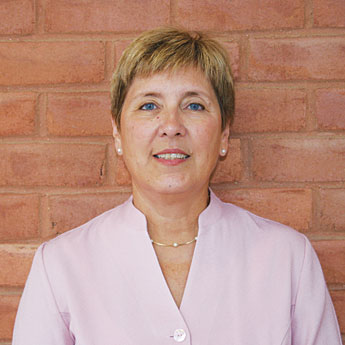
| Winter 2006, No. 23 |
ContentsCollege, Villa Julie Sign Transfer Agreements in Nursing and Forensic Studies College Website Recognized Among Nation’s Best Shattuck Co-Authors International Journal Article State Approves new Teaching Degree Carroll Student Publishes First Book Carroll is Maryland’s Fastest-growing Community College over Past Five Years
|
| Co-Authors International Journal Article | ||
|
Kay Shattuck, director of Distance Learning at Carroll, is a published author about online college courses. Shattuck had the unusual opportunity last summer to collaborate with two other authors, each working from a different continent, Michael G. Moore and Aisha Al-Harthi. Moore, an internationally known expert in distance education originally from England, was traveling throughout Europe as he wrote. Al-Harthi, a Penn State doctoral student, was at home for the summer in her native Oman. The three were invited to prepare an article for the international journal, “Journal of e-Learning and Knowledge Society.” The article titled, “Cultures Meeting Cultures in Online Distance Education,” appeared in the September 2005 issue. The article focuses on the increasing numbers of students worldwide participating in online learning, and the cross-cultural differences that affect the student learning experience. For example, American and European education is guided by theories derived from those cultures and might be challenging for learners from non-Western cultures. Similarly, Western teachers and learners need to understand teaching and learning traditions from non-Western perspectives. One may assume that collaborating on a project like this one across the globe would be fairly simple, given global connections through the worldwide web. But Shattuck encountered some interesting challenges along the way. “In an instant communication world, human issues still hold,” said Shattuck. “Aisha was a busy new bride. I wasn’t sure that I could locate her online, because I didn’t know which e-mail address she might be checking during the summer while she was traveling on her wedding trip. And it took quite awhile to get used to the fact that at home her weekends fell on our Wednesdays and Thursdays, not on Saturdays and Sundays. That led to juggling some deadlines.” There were also technology considerations when collaborating globally. “Here, we are used to working with fast- networked systems,” said Shattuck. “But my colleagues sometimes only had phone line and pay-per- minute Internet access. This created some difficulty in file exchange, until we figured out the best formats for quicker downloads of a file that contained charts and graphics,” she said. “It was a great experience because we were dealing with some of the technical issues that learners can find themselves dealing with.” Perhaps the biggest lesson Shattuck learned was about the educational challenge that occurs when a course is designed from one cultural perspective, and taught to learners from another perspective. The challenge remains how to keep cross-cultural issues (technical, as well as teaching/learning styles) from bogging down the student, so as not to limit the learning experience. As the three authors wrote, “The potential of e-learning to become a global phenomenon will be frustrated as long as educators in more technologically-developed countries fail to understand the needs and perspectives of the vast potential populations of students in other countries.” While this article focused on crossing international boundaries, Shattuck points out the importance of understanding how to teach across different cultural traditions in America. “Within our own country, diversity of students’ backgrounds must be considered if we really value education,” added Shattuck, who is currently working with Al-Harthi on another article about ways to design and teach online courses for a diverse student population.
Kay Shattuck |
||
